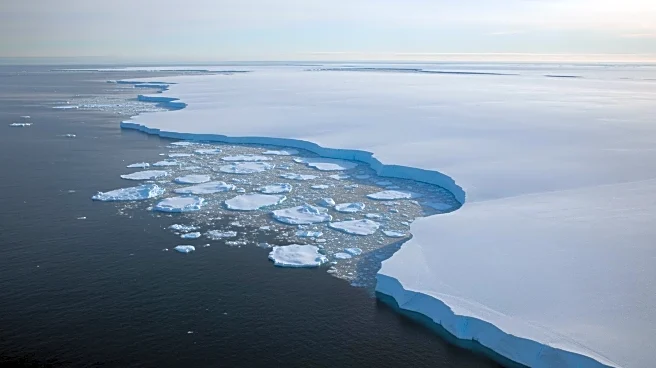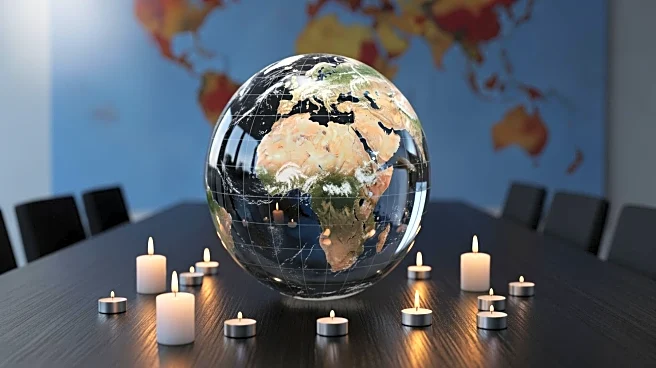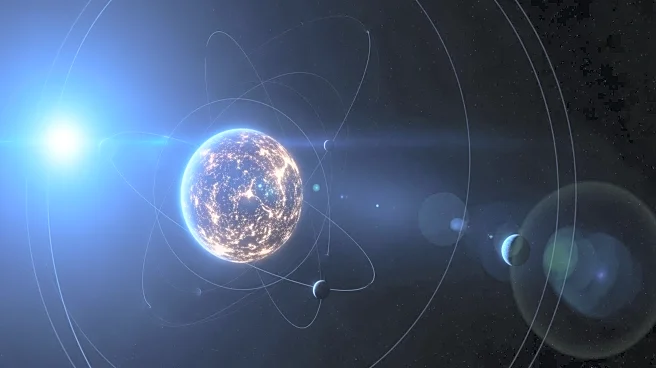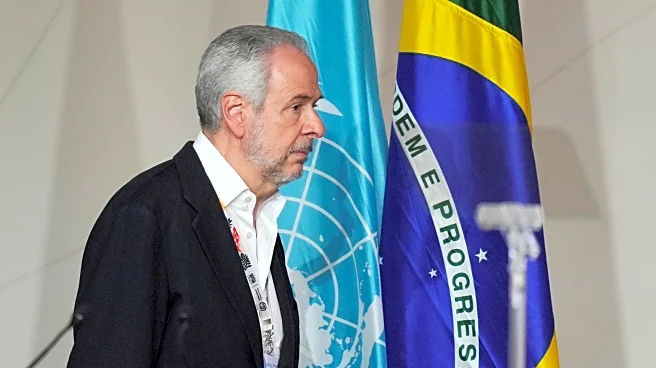What's Happening?
NASA and the National Oceanic and Atmospheric Administration (NOAA) have reported that the ozone hole over Antarctica in 2025 was the fifth smallest since 1992. This year, the ozone hole reached its maximum extent on September 9, covering 8.83 million
square miles, which is about 30% smaller than the largest hole recorded in 2006. The reduction in size is attributed to the Montreal Protocol, an international agreement that phased out ozone-depleting chemicals. The ozone layer acts as a protective shield against harmful ultraviolet radiation from the sun, and its recovery is crucial for preventing health issues such as skin cancer and cataracts. The hole is breaking up earlier than usual, indicating a positive trend towards recovery.
Why It's Important?
The shrinking of the ozone hole is significant as it demonstrates the effectiveness of international environmental agreements like the Montreal Protocol. The recovery of the ozone layer is crucial for protecting human health and the environment from the harmful effects of ultraviolet radiation. The reduction in ozone-depleting substances has led to a decrease in the size of the ozone hole, which is expected to fully recover by the late 2060s. This progress highlights the importance of global cooperation in addressing environmental challenges and the potential for reversing damage caused by human activities.
What's Next?
Continued monitoring and research are essential to ensure the ongoing recovery of the ozone layer. NASA and NOAA will keep tracking the ozone levels using satellites and other instruments to provide accurate data on its status. As emissions from legacy uses of banned chemicals taper off, the ozone hole is projected to recover fully in the coming decades. The success of the Montreal Protocol serves as a model for future environmental agreements aimed at mitigating climate change and other global issues.
Beyond the Headlines
The recovery of the ozone layer has broader implications for climate policy and international cooperation. It demonstrates that coordinated global action can effectively address environmental issues, providing a blueprint for tackling other challenges such as climate change. The success of the Montreal Protocol may inspire similar efforts to reduce greenhouse gas emissions and promote sustainable practices worldwide. Additionally, the ongoing research into ozone depletion contributes to a better understanding of atmospheric science and the impact of human activities on the environment.














